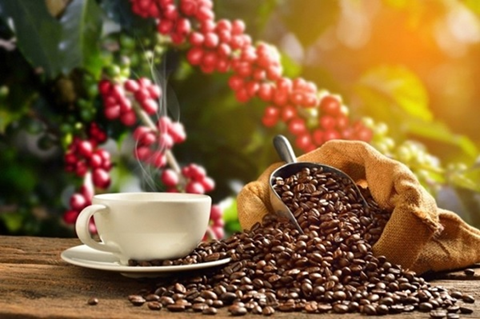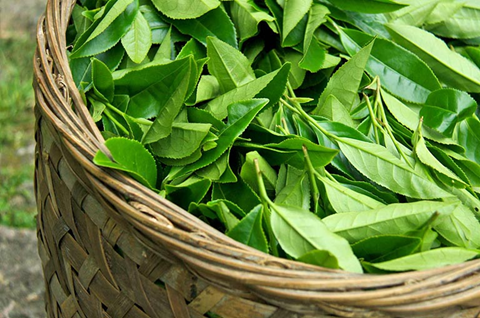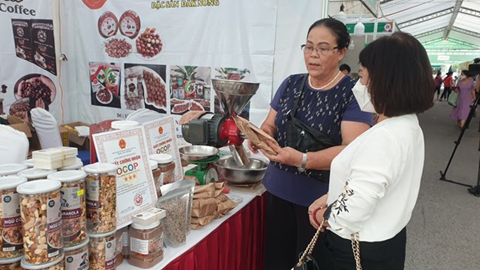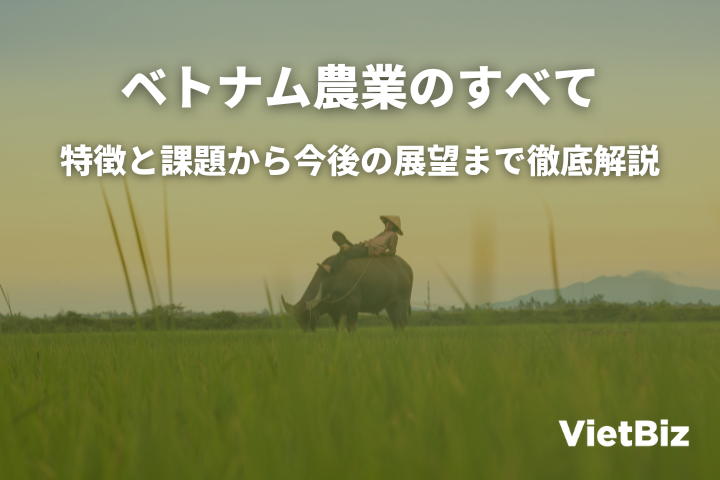Introduction
Agriculture is an extremely important core industry in Vietnam. Vietnam has fertile land and one of the highest solar radiation levels in Southeast Asia, as well as abundant river and water resources, including the Mekong River. In fact, Vietnam is one of the world’s top exporters of rice, coffee, rubber, cashew nuts, and other commodities.
In recent years, one of the characteristics of Vietnamese agriculture is the complex development of the biomass sector, which makes use of waste from agriculture, and smart agriculture through the introduction of IT, ICT, and other technologies.
This report will provide a comprehensive introduction and explanation of agriculture in Vietnam. It will refer exhaustively to the basic outline, import/export situation, systems, issues, and future prospects.
Vietnam Agricultural Market Overview
Vietnam’s agriculture, forestry, and fisheries industry accounted for 12.56% of total GDP (2021). In the same year, the export value of agricultural products reached US$48.65 billion, accounting for 14.4% of the total export value. Among them, cultivation accounted for 64-68% of the total value of agricultural exports, amounting to about US$30 billion.
ベトナム農業の特徴
In Vietnam, land used for agriculture is often divided into the following categories
Annual Crop Land: Land used for the cultivation of crops with a growing season of less than one year.
- Examples of major annual crops in Vietnam: grains (rice, corn, millet, etc.), industrial plants (sugarcane, sedge, jute, etc.), vegetables, medicinal plants, etc.
Perennial Crop Land: Land used to grow crops that, once planted, will grow for many years.
- Examples of major perennial plants in Vietnam: perennial industrial plants (rubber, cocoa, tea, cashew, coconut, etc.), fruit trees (pomelo, orange, longan, mango, etc.), medicinal plants (anise, cinnamon, ginseng, etc.).


In 2021, the area of land under annual crops (6787.1 thousand ha) will be larger than that under perennial crops (4931.3 thousand ha). In Vietnam, nearly 60% of the land under annual crops is used for rice cultivation.
Climate
Vietnam has a humid tropical monsoon climate with mild temperatures and ample rainfall throughout the year, which helps plants to grow. In addition, the climate differs from north to south, allowing tropical and temperate zone plants to be grown.
However, every year Vietnam suffers from natural disasters such as floods, including rainstorms and floods, and hot, dry westerly winds, and agriculture is severely damaged.
Characteristics of Each Area
Because of the different natural conditions and climates in Vietnam, each region has its own typical agricultural products and cultivation methods.
- In the northern inland and mountainous areas, the production of agricultural products such as tea, rice, and fruit trees (orange, mango, peach, mangosteen, and rambutan) is relatively high.
- In the Red River Delta region, there are many agricultural products such as high-quality rice, vegetables, flowers, and fruit trees (longan, orange, grapefruit, pineapple, etc.), which are developing in the direction of intensive agriculture and high-tech.
- The North Central region is susceptible to natural disasters such as floods, and special attention should be paid to the production of agricultural products. The region is a major producer of citrus fruit trees, tea, peanuts, sugarcane, and medicinal plants.
- The South Central Coast region is dominated by the production of drought-tolerant crops such as dragon fruit, mangoes, grapes, apples, and durians, as well as medicinal plants and flowers. Efforts are also being made to develop specialty products combined with ecotourism and marine tourism.
- The Central Highlands region has areas specializing in coffee, pepper, rubber, tea, cashew nuts, fruit trees, and medicinal plants, plus an emphasis on developing high-tech agriculture to grow flowers, ornamental plants, and vegetables.
- The southeastern region grows industrial crops such as rubber, cashew, pepper, sugarcane, cassava, and fruit trees. It is also a center for research and transfer of science and technology related to agriculture, and a center for agro-processing for the southeastern provinces.
- The Mekong Delta region is a major rice producing area and is responsible for national food security and exports. Fruit trees, vegetables, flowers, and ornamental plants are also grown with high efficiency.

ベトナムの主な農産物
This section introduces and describes the main agricultural products of Vietnam.
Rice
In 2021, Vietnam’s domestic rice production reached 43.86 million tons. Export volume reached 6.24 million tons, with export value of US$3.29 billion. Vietnam’s rice exports now account for about 15% of the world’s rice exports. Vietnam is the second largest rice exporter in the world. So far, Vietnamese rice has reached 150 countries and regions.

Coffee
Like rice, Vietnam’s coffee is the world’s second largest coffee exporter after Brazil in terms of export volume; in 2021, Vietnam’s coffee export volume reached 1.56 million tons, worth $3.07 billion. Vietnam’s coffee is exported to more than 80 countries and regions, accounting for 14.2% of the world’s coffee export share, mainly green coffee beans.

Rubber
Vietnam is currently the world’s third largest rubber exporter, exporting 1.93 million tons in 2021 with an export value of US$3.24 billion. Vietnam’s rubber latex harvest will reach 1.26 million tons in 2021, accounting for 8.7% of global rubber production. Currently, Vietnam’s rubber is exported to more than 80 countries and regions around the world.

Cashew Nuts
Vietnam will export about 6.0926 million tons of cashew nuts in 2021, with total sales of about US$3.75 billion.In 2021, Vietnam will be the world’s largest cashew nut exporter for the 15th consecutive year since 2006, accounting for 80% of the world’s total production.

Pepper
Vietnam is currently the world’s largest pepper producer, with exports accounting for 40% of global production. Vietnamese pepper has been exported to 110 countries so far; in 2021, Vietnam exported 263,692 tons of pepper, of which 231,676 tons were black pepper and 30,2016 tons were white pepper. Total export value reached US$948.7 million.

Tea
In 2021, Vietnam’s tea exports will reach 127,000 tons valued at US$214 million, of which black tea will account for 51%, green tea 48%, and the rest other teas. Vietnamese tea is exported to 70 countries and regions. Currently, Vietnam ranks fifth in the world in tea exports and seventh in tea production.

Fruits
In 2021, Vietnam’s vegetable and fruit exports are estimated at US$3.52 billion, of which fruits account for 66.7%. Major export destinations include China, the U.S., South Korea, Japan, Thailand, and the EU. Among fruits, dragon fruit, citrus fruits, pomelos, mangoes, pineapples, and longan are the main export items.
In particular, Vietnam leads the world in dragon fruit, with exports of US$1.04 billion in FY2021. In addition to China as its main market, Vietnamese dragon fruit has entered many other markets that demand high quality standards, such as Korea, Australia, the EU, the US, and Japan.

Trade in Vietnamese Agricultural Products
This section introduces and describes agricultural products that Vietnam exports and imports in particular.
Exports
Vietnam exports eight major agricultural products: vegetables and fruits, cashew nuts, pepper, tea, coffee, rice, cassava and cassava products, and rubber.
| Export volume(thousand tonnes) | export value(Billion U.S. dollars) | |
| Vegetables・Fruits | N/A | 3.55 |
| Cashew Nuts | 580 | 3.64 |
| Tea | 127 | 0.21 |
| Coffee | 1,560 | 3,07 |
| Rice | 6,240 | 3.3 |
| Cassava・cassava products | 2,880 | 1.18 |
| Rubber | 1,960 | 3.28 |
| Pepper | 261 | 0.93 |
Currently, Japan is the third largest vegetable and fruit export destination for Vietnam; in 2021, Vietnam’s vegetable and fruit exports to Japan amounted to US$153.2 million. In particular, Vietnamese fruits are increasingly favored by the Japanese. So far, Vietnam has exported eight kinds of fruits to Japan: coconut, pineapple, durian, banana, dragon fruit, mango, and lychee.

Imports
Vietnam imports five main agricultural products: soybeans, wheat, corn, rice, and fruits and vegetables. Vietnam’s main import destinations for agricultural products are China, the U.S., Australia, New Zealand, and Thailand. Below is a list of the main agricultural products that Vietnam imports.
| Import volume(thousand tonnes) | Import value(billion U.S. dollars) | |
| Soy beans | 2,020 | 1.18 |
| wheat | 4,680 | 1.38 |
| maize | 10,030 | 2.88 |
| Rice | 1000 | 0.3 |
| Vegetables・Fruits | N/A | 1.48 |
Currently, Vietnam imports three types of fruits from Japan: apples, Japanese pears, and unshu mandarins. Although there are not many varieties, Japanese fruits are preferred by many Vietnamese as gifts because of their high quality and high price.

Vietnamese Government Policy
In Vietnam, in early 2022, the Prime Minister issued Decision No. 150/QD-TTg approving the “Strategy for Sustainable Development of Agriculture and Rural Areas in 2021-2030 and Vision for 2050”. The following are representative policies in the decision
Development of Sustainable and Environmentally Friendly Agriculture
Vietnam aims to reduce greenhouse gas emissions in the agricultural sector by 10% from 2020 levels by 2030. Therefore, the development of organic or ecological agriculture, the application of environmentally friendly production processes, and the rational and economical use of inputs and resources are encouraged.
Promote The Use of Information Technology
Promote mechanization, automation, and information technology in agricultural production to develop smart agriculture (high-tech agriculture). Encourage domestic and foreign companies to actively invest in the development of infrastructure, machinery, human resources, and technology for all stages of agricultural production, harvesting, preservation, and processing.
Promote The Development of Collaborative Models
Promote the development of collaborative models in agriculture.
- Inter-sectoral: Combination of agriculture and industry (agro-processing, waste and by-product recycling, renewable energy production, etc.), combination of agriculture and services (experiential tourism, agricultural trade services, etc.)
- Between regions: formation of large-scale production areas
- Between farmers and businesses
- Between domestic and global value chains
Preferential Policies for Companies Investing in Agriculture
Decree No. 57/2018/ND-CP of the Government of Vietnam establishes several preferential and supportive policies for enterprises investing in agricultural and rural areas.
Specifically, projects in the agricultural and rural sectors will be supported in terms of land use fee exemptions/exemptions, land rent exemptions/exemptions, human resource development, market development, and infrastructure investment.
In particular, for investment projects in the smart agriculture (high-tech agriculture) sector, the government will support 70-80% of the funds for research and project implementation.
Issues and Problems in Vietnamese Agriculture
This chapter will list some of the challenges of Vietnamese agriculture.
Low Value-Added
Despite the fact that Vietnam is one of the world’s leading exporters of agricultural products, the value added of Vietnam’s exported agricultural products is still low. This is due to the lack of processing and branding of agricultural products in Vietnam.
First, in Vietnam today, only 5-10% of agricultural products are processed. The number of modern processing plants is small and most of the work is done manually with poor efficiency. In addition, there is no good coordination between processors and producers.
Second, most Vietnamese agricultural products are not properly branded. Most farmers and related businesses still export agricultural products in the form of raw materials. In some cases, foreign trading companies buy products from Vietnam, brand them themselves, and sell them, earning many times higher profits than Vietnamese farmers and businesses that produce directly.
Low Productivity
The productivity of Vietnamese farmers is among the lowest in Asia. The main reasons for this are the small and fragmented scale of production, the low level of expertise and skills among farmers, and the large number of elderly workers in production areas.
Loss-Making
Vietnam currently has nearly 50 cold storage warehouses for agricultural and marine products in the country, with a capacity of about 700,000 pallets. However, the number of refrigerated warehouses mentioned above still does not meet the needs of storing fresh agricultural and marine products and processing them for export. For example, according to statistics from the Lam Dong Provincial Department of Agriculture, only about 15% of the province’s total agricultural production is processed, and only 50% is preserved through the cold chain, leaving a significant amount of agricultural products that are not refrigerated and damaged.
Because of this underdeveloped cold chain in Vietnam, there is a lot of loss of agricultural products and food products, and the trade area for products requiring a cold chain is limited.
Solutions to Issues and Problems in Vietnamese Agriculture
This chapter will discuss solutions to the issues raised above.
Quality Improvement
The primary solution to increasing the added value of Vietnam’s abundant agricultural products is to improve the processing capacity of agricultural products. The Vietnamese government encourages the development of fruit, vegetable, and rice processing plants that utilize modern technology at the point of origin.
Indeed, there are several processing plant projects using modern, high-tech processing lines. The following are some of the larger projects by domestic and foreign investors.
- Doveco Son La Vegetable and Fruit Processing Plant (Dong Giao Export Food Co., Ltd.): with an annual processing capacity of 52,000 tons, the plant has three processing lines: concentrated fruit juice processing, frozen fruit and vegetable processing, and canned fruit and vegetable processing.
- Tanifood Vegetable and Fruit Processing Plant (Lavifood): With an annual production capacity of 60,000 tons, the plant processes various forms of vegetables and fruits, including fresh, frozen, dried, fruit juice concentrate, and bottled juice. This factory is the first in Vietnam to comply with the Lead Silver standard of the U.S. and to apply 4.0 technology in its management and operation.
- Agro-processing plant and storage warehouse (F-ONE GLOBAL FOODS, Korea): The plant processes and stores 3,000 tons of agricultural products annually, including vegetables, fruits, and marine products. The processed products are exported to Korea and some are consumed in Vietnam.

Branding
Branding of agricultural products is another important solution to increase product value. Governments and many localities have supported partnerships between farmers and businesses to create strong brands and have built up production areas of sufficient size. Trade promotion and brand promotion activities are also being promoted to bring brands of agricultural products closer to domestic and international consumers. Below are some examples with images.


出所:現地メディア Doan Nhan Tre
Diffusion of Smart Agriculture
Smart agriculture (or high-tech agriculture) is the use of new and advanced technologies (mechanization, automation, IT, biotechnology, new agricultural models, etc.) in agricultural production to improve the productivity and quality of agricultural products and to achieve sustainable industrial development.
In Vietnam, in recent years, several enterprises and cooperatives in Lam Dong, Hanoi, Ninh Thuan, and other areas have actively adopted smart agriculture and achieved some positive results. Specifically, as of the end of June 2022, Vietnam had 18 agricultural regions with 290 agricultural enterprises applying high technology to the production of vegetables, flowers, fruits, rice, coffee, pepper, aquaculture, and livestock.
Major applied technologies include cultivation in plastic greenhouses and greenhouses, highly efficient irrigation technologies (automatic and semi-automatic sprinklers, drip irrigation), use of IoT technologies in agricultural management, and use of drones in plant health assessment, monitoring, seeding, and spraying. Initiatives such as these are expected to expand further in the future.



Encourage Investment in Cold Chain
With the growing demand for cold storage of agricultural products for domestic consumption and export, investment in cold chain development is urgently needed in Vietnam, where cold chain capacity is still inadequate.
In response to this situation, the Vietnamese government has launched a project to support companies with investment projects in agricultural product preservation facilities (including drying, irradiation, sterilization, freezing, and biological preservation) by providing 70% of the investment cost (no more than VND200 million per project).
In fact, Vietnam’s cold chain sector has seen large-scale investments and projects, both domestic and foreign.

Summery
Agriculture is one of Vietnam’s major industries and contributes significantly to the country’s economy, with many agricultural products boasting the world’s top export volumes. However, most of Vietnam’s agricultural exports are still unprocessed and have low added value. Low productivity, little investment in machinery and technology, and a lack of a cold chain are also problems facing Vietnamese agriculture. Therefore, the Vietnamese government has also introduced policies to promote investment in a number of sectors, including agro-processing, cold chain, and high-tech agriculture; projects in these sectors are gradually becoming operational as Vietnam works toward its goal of becoming one of the world’s top 15 agricultural countries by 2030.
Careful research is necessary when developing businesses related to agriculture abroad. In particular, agriculture in Vietnam has many related markets, such as energy, IT, and cold chain. In addition, there are many small and medium-sized farmers, and the relationships among stakeholders are complex. It is essential to confirm accurate information in advance.
When starting an international business, one should consider consulting with experts in each country.
【関連記事】ベトナム農業の関連分野については、こちらの記事も合わせてご覧ください。
ベトナム市場調査レポート一覧はこちらからもご覧頂けます。

ベトナム市場の情報収集を支援します
ベトナム市場での情報収集にお困りの方は多くいらっしゃるのではないでしょうか。
VietBizは日本企業の海外事業・ベトナム事業担当者向けに市場調査、現地パートナー探索、ビジネスマッチング、販路開拓、M&A・合弁支援サービスを提供しています。
ベトナム特化の経営コンサルティング会社、ONE-VALUE株式会社はベトナム事業に関するご相談を随時無料でこちらから受け付けております。








